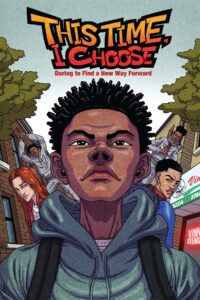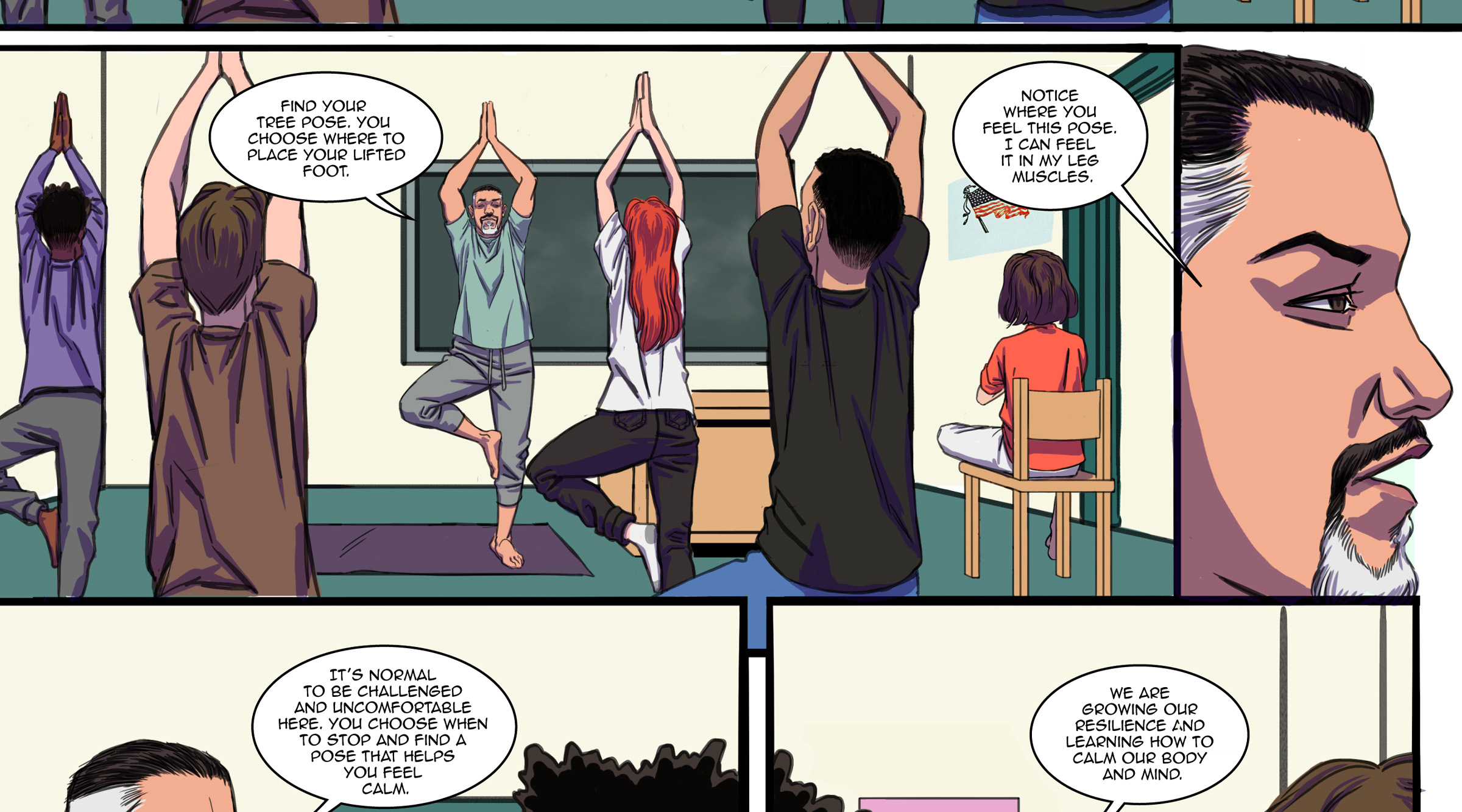By Nicole Hellthaler, Executive Director
 At Prison Yoga Project, we love to share stories of impact—how yoga is reaching people in prisons and jails, and how it’s reshaping communities.
At Prison Yoga Project, we love to share stories of impact—how yoga is reaching people in prisons and jails, and how it’s reshaping communities.
Today’s story is a little different. We want to take you behind the scenes and share how our team created something brand new: our first-ever graphic novel.
Why Publishing Matters at PYP
While many know us for our yoga programs and trainings, publishing has always been a cornerstone of our work. Our founder, James Fox, created Yoga: A Path for Healing and Recovery to reach incarcerated people who didn’t have access to in-person classes. Since then, we’ve sent more than 40,000 free copies across the U.S., translated into Spanish and French. Later came Freedom from the Inside, a resource specifically for incarcerated women, also in Spanish.
We’ve continued developing resources—curriculums, audio practices, youth materials—but one gap remained: something accessible, engaging, and designed for young people.
Why a Graphic Novel?
Graphic novels are among the most requested books by incarcerated people. They’re accessible for readers at all literacy levels, and they draw people in through story. As a former high school teacher and juvenile detention yoga facilitator, I knew this could be the perfect way to connect with youth. I’m especially grateful to my colleagues Bill Brown and Blaire Embrey for sparking this idea and believing we could make it happen.
What if we created a graphic novel that told a powerful story and wove in yoga and nervous system education—the same way we weave teachings into every class?
How We Made It Happen
It began with an idea, then drafts, edits, and a huge team effort:
- Story & Script: Our team drafted the story and worked with author Dr. Sheena Howard to adapt it into graphic novel format, then refined it with yoga-specific language and corrections facility guidelines.
- Educational Sections: These were inspired by real conversations I had with teens in detention. One day, I explained how the teenage brain has lower baseline dopamine and craves novelty—making adolescents both brave in forming identities and more prone to risky behavior. I’ll never forget the moment: mouths dropped open, eyes sparkled, and a wave of relief came over the group. They realized there was a reason they felt the way they did—and that they could have some control over how they felt and chose to act. That simple conversation was empowering, and I knew we had to recreate that moment of self-understanding in the graphic novel for countless other youth. My co-facilitator, Rachel Villafane, partnered with us to carefully craft these sections.
- Art & Design: We were fortunate to work with artists Ron Ackins and Dongyun Lee, who brought the story to life with incredible care. After many rounds of revisions and the support of a design team and copy editor, the book finally came together.
And of course, there were the human moments. The fun ones—like sitting with our facilitators and choosing the final cover art from Dongyun’s drafts. And the stressful ones—printing out the manuscript, combing through every tiny detail until my eyes were sore. I’m especially grateful to our teammate Bill, who patiently reworked text bubbles when we realized some of the font was too small. Every little tweak made the book stronger, more accessible, and more true to our vision.
An Unexpected Gift: Meeting Dr. Dan Siegel
Along the way, something serendipitous happened. At the Unlikely Collaborators Foundation Summit two summers ago, I struck up a conversation with Dr. Scott Barry Kaufman, a psychologist and author whose work I deeply admire. To my surprise, he turned out to be a friend of Dr. Dan Siegel—and he offered to introduce us.
Dr. Siegel, a renowned psychiatrist and pioneer in the field of interpersonal neurobiology, wrote the groundbreaking book Brainstorm. That book had been instrumental in shaping how I spoke with teens about their developing brains. It gave me language to explain the science behind their feelings, choices, and resilience—and I had been sharing his insights with our participants for years.
When we asked Dr. Siegel if he would consider writing the foreword for our graphic novel, he graciously said yes. His contribution feels like a full-circle moment—linking the neuroscience that guided my early teaching with this new resource designed to empower a generation of youth.
Full Circle
This summer, after years of dreaming and creating, our graphic novel was complete. And in a full-circle moment, the very detention center where I once explained dopamine to a circle of teens—watching their eyes light up with understanding—will soon receive the first copies of this new book.
It’s a resource created with and for youth, grounded in years of listening, teaching, and learning.
An Invitation
We can’t wait to share this graphic novel more widely, and we’d love for you to be part of that journey. Whether it’s helping us get copies into more facilities, sharing this story with a friend who loves graphic novels, or simply celebrating this milestone with us—we’re so grateful you’re here with us.
Together, we’re building resources that meet people where they are—with compassion, creativity, and care.
With heartfelt thanks, I acknowledge Unlikely Collaborators and The Mental Insights Foundation for their invaluable support in bringing this book to life.



